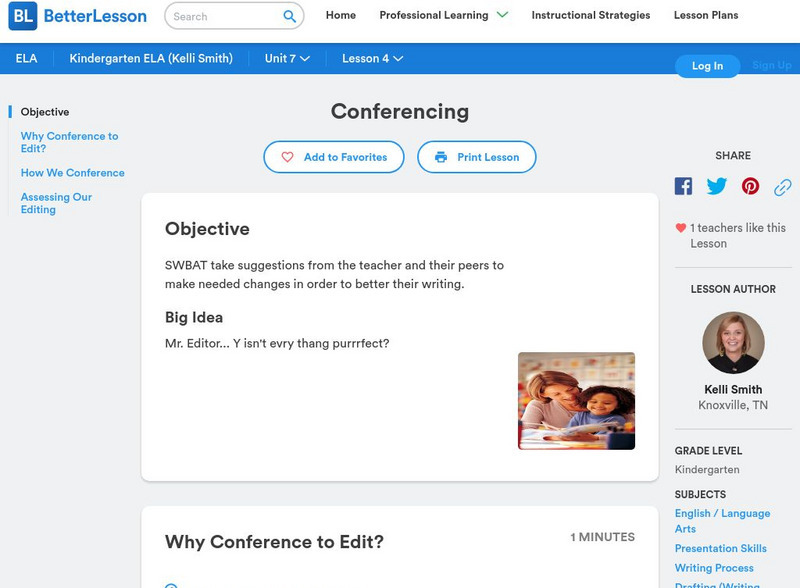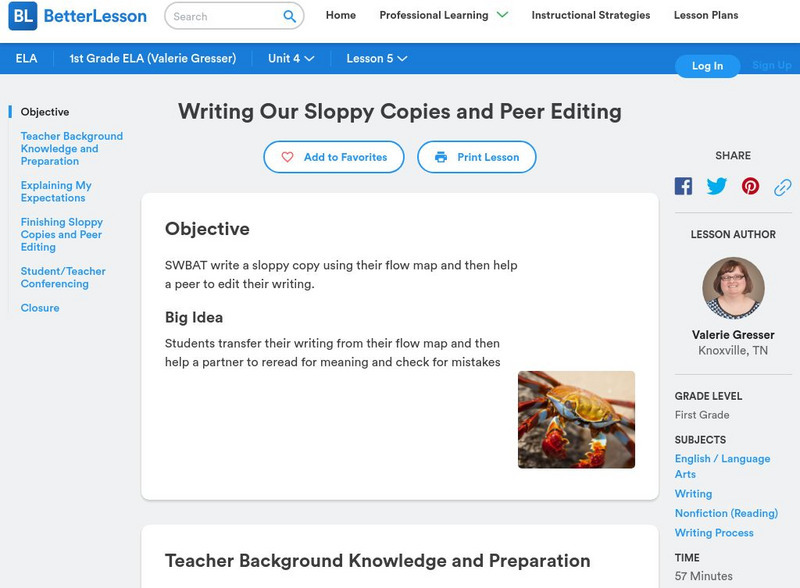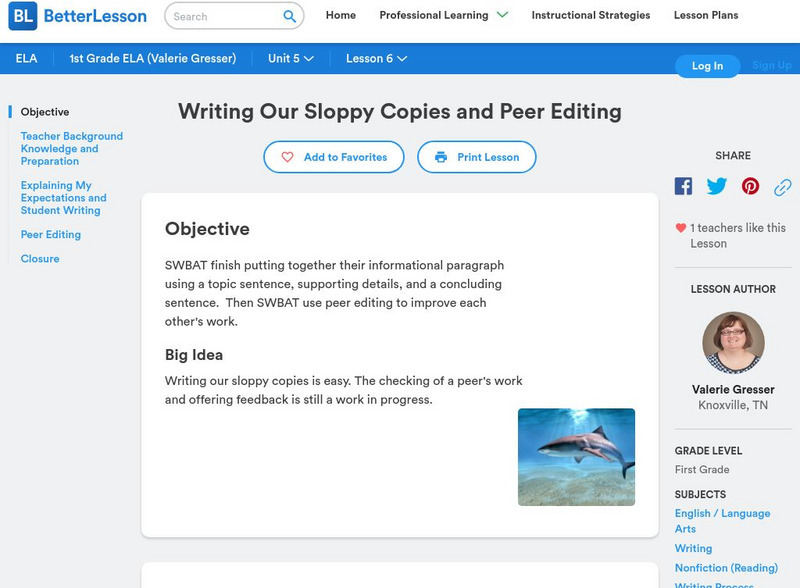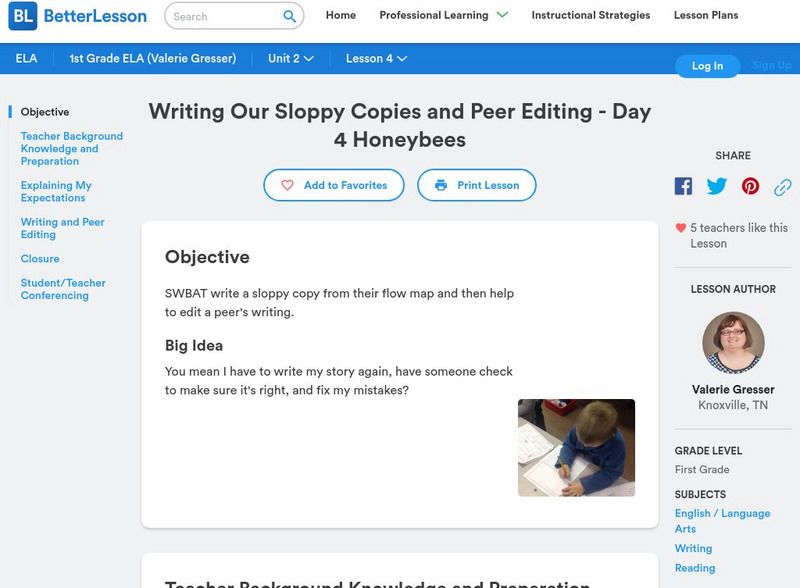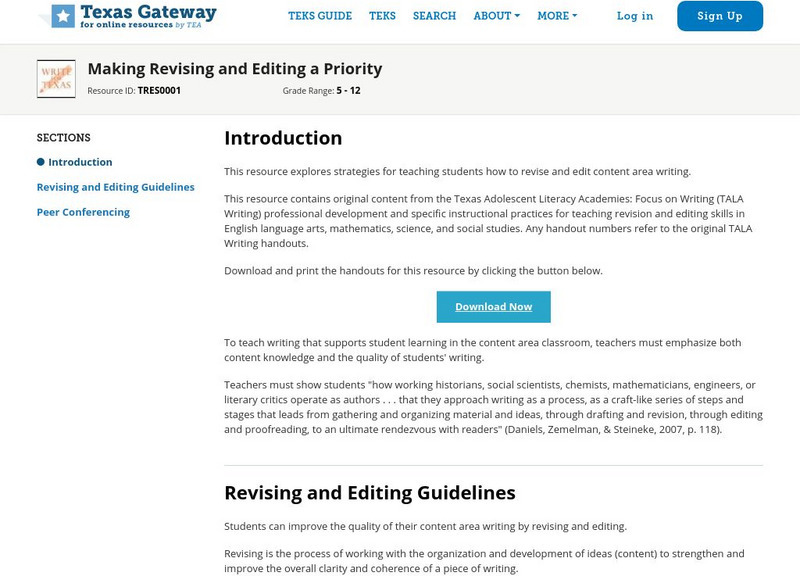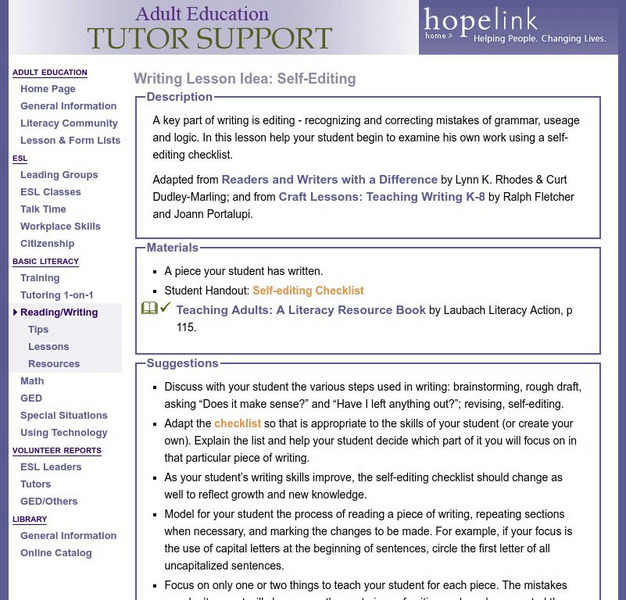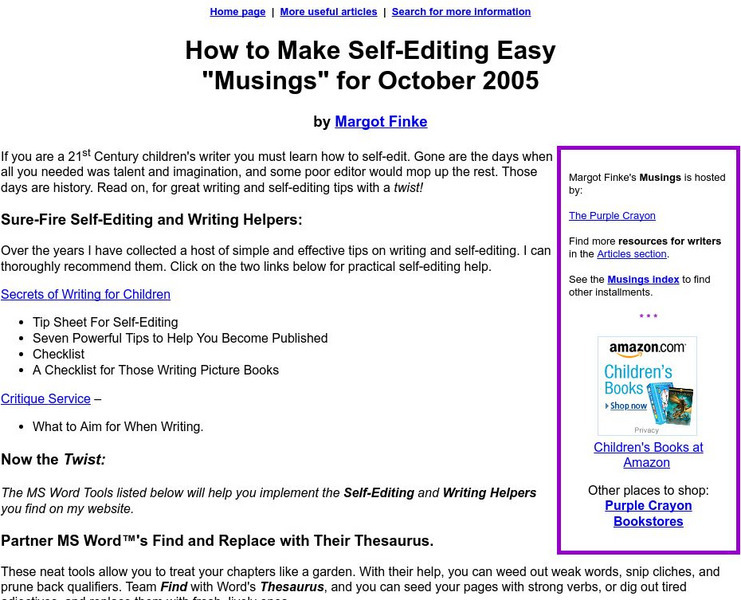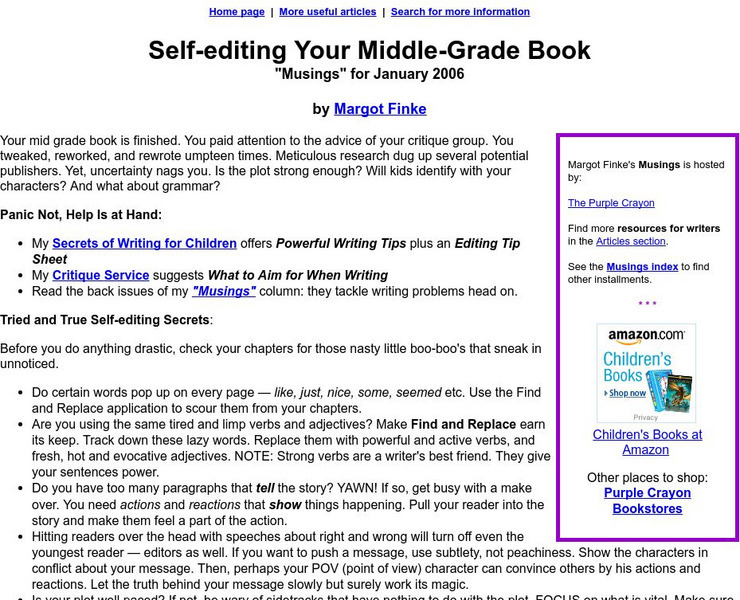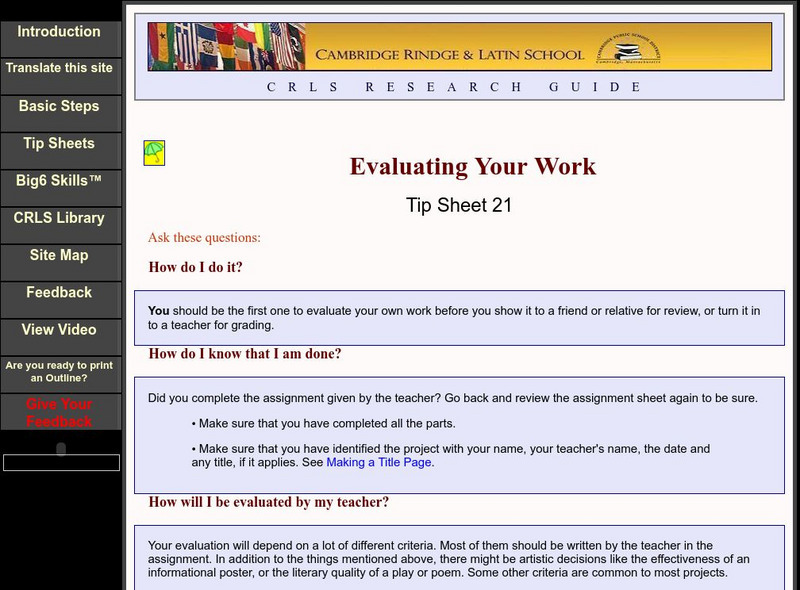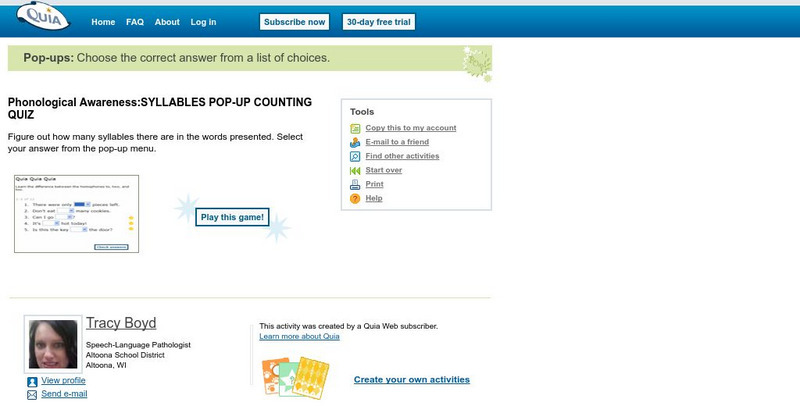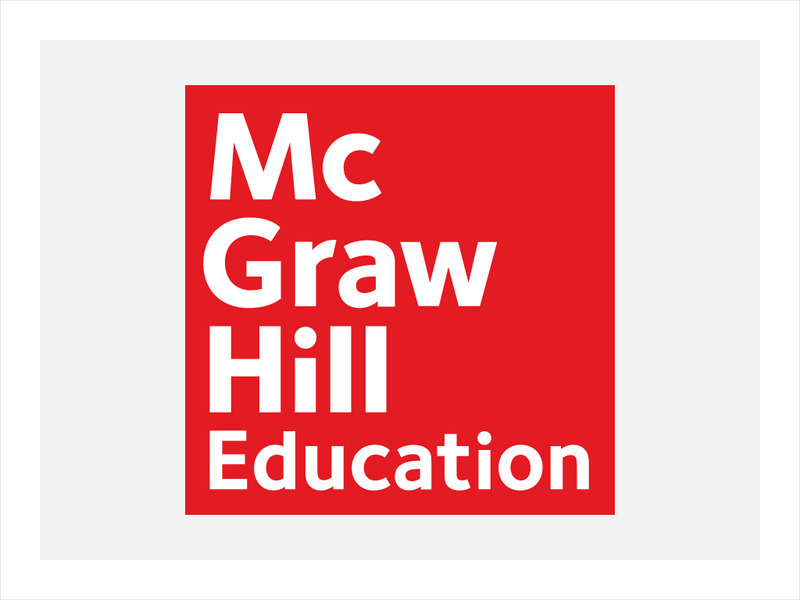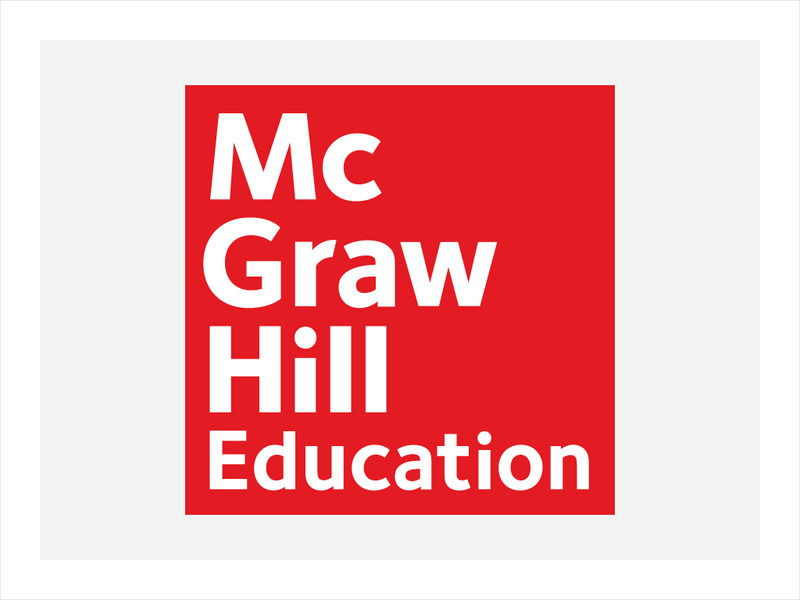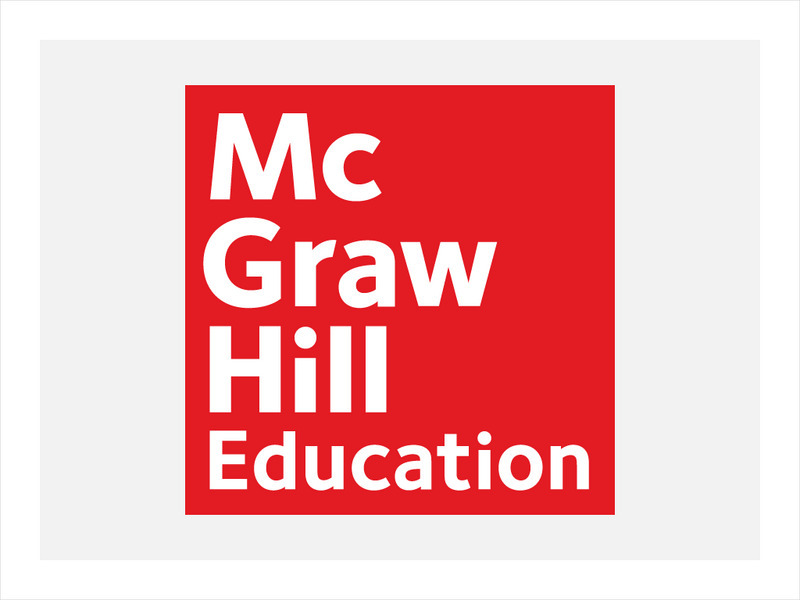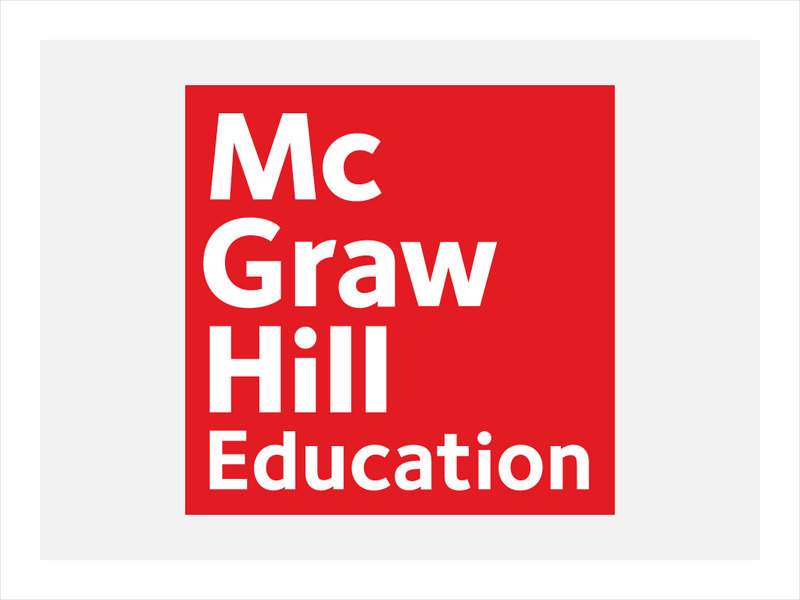Hi, what do you want to do?
Better Lesson
Better Lesson: Conferencing
Editing is a step that can often be overlooked in Kindergarten; however, it is crucial that our students understand how and why to go back and fix their writing! In this instructional activity, students will take suggestions from the...
Better Lesson
Better Lesson: Writing Our Sloppy Copies and Peer Editing
Students will write a sloppy copy and help a peer to edit their writing. They will use a kid-friendly checklist (included)to help each other find their mistakes. Videos of students engaged in the lesson are provided, along with a...
Better Lesson
Better Lesson: Writing Our Sloppy Copies and Peer Editing
Students will write a sloppy copy and help a peer to edit their writing. They will use a kid-friendly checklist (included)to help each other find their mistakes. Videos of the lesson in action are provided, along with a teacher's grading...
Better Lesson
Better Lesson: Writing Our Sloppy Copies and Peer Editing Day 4 Honeybees
You mean I have to write my story again, have someone check to make sure it's right, and fix my mistakes? In this lesson, students will peer edit each other's writing. They will use their five-star checklists (included) to make sure they...
Texas Education Agency
Texas Gateway: Teaching Revising & Editing: Making Revising & Editing a Priority
This resource explores strategies for teaching students how to revise and edit content area writing. It contains original content from the Texas Adolescent Literacy Academies: Focus on Writing professional development. Download and print...
Texas Education Agency
Texas Gateway: Writing: Editing: Strategies for Editing: Practice 3
A learning module that teaches students about editing their writing in four mini-lessons: Introduction, Avoiding Coma Catastrophes, Placing Quotation Marks, Apostrophes, Em Dashes Like a Pro, and and Putting It All Together.
Texas Education Agency
Texas Gateway: Writing: Editing: Strategies for Editing: Practice 2
A learning module that teaches students about editing their writing in four mini-lessons: Introduction, To Be or Not to Be in Capitals. That Is the Question, How Do You Spell It: Shakesspere, Shakysper, Shaxpeer, or Shakespeare?, and...
Texas Education Agency
Texas Gateway: Writing: Editing: Strategies for Editing: Practice 1
A learning module that teaches students about editing strategies in five mini-lessons: Introduction, Spelling Spectacularly, Capitalizing Confidently, Punctuating Perfectly, and Putting It All Together.
Hopelink
Hopelink: Writing Lesson Idea: Self Editing
This writing lesson teaches students how to become self-editors by learning to judge and critique their work.
Harold D. Underdown
How to Make Self Editing Easy
Provides several strategies for easing the difficult process of editing your work (site pertains to writing children's literature). Includes mainly electronic methods of making self-editing easy.
Harold D. Underdown
Self Editing Your Middle Grade Book
An excellent resource for writers who have completed a young adult novel or book. Includes links to helpful websites and "tried and true self-editing secrets."
Cambridge Rindge & Latin School
Cambridge Rindge & Latin School: Evaluating Your Work
An excellent tip sheet on how to evaluate and edit a completed draft of a research paper. Includes in-depth information and examples.
Grammarly
Grammarly Handbook: Unnecessary Words and Phrases
This page explains the need to revise writing to remove unnecessary words and phrases to produce clear, concise writing. Examples are provided.
Other
The Editing Process: Paradigm Online Writing Assistant
What does the editing process consist of for your students? Use this informative site to learn more about editing.
Grammarly
Grammarly Handbook: Shifts in Writing
Five areas to edit for shifts in writing: Consistent Point of View, Consistent Verb Tenses, Verbs Consistent in Mood and Voice, Shifts from Indirect to Direct Questions/Quotations, and Shifts from British to American English. Each area...
Grammarly
Grammarly Handbook: Revising and Editing the Draft
Tips for revising and editing a rough draft. Links to additional information on Global Revisions, Editing Sentences, and Proofreading is provided.
Quia
Quia: Homonym Madness
This Quia Pop-Up game is a proofreading exercise in which students see a part of a friendly letter and are asked to select the correct form and punctuation for it using the drop-down menu.
Quia
Quia: Phonological Awareness
This proofreading exercise asks students to read sentences and using the drop-down menu to select the correct choice for the blank. These sentences cover capitalization, punctuation, spelling, and usage.
McGraw Hill
Glencoe: Writer's Choice: Grade 6 Proofreading Practice
This site offers two proofreading exercises in which students proofread for errors in spelling, capitalization, punctuation, and usage, and then retype passages correctly. When finished they click Answers for feedback.
McGraw Hill
Glencoe: Writer's Choice: Grade 9 Proofreading Practice
This site provides 2 exercises in which students proofread passages for errors in spelling, capitalization, punctuation, and usage, and then retype the passage correctly. When finished they can click on Answers for feedback.
McGraw Hill
Glencoe: Grade 7: Practice Proofreading
In this exercise, students are to read a paragraph about Emily Dickinson, find the 5 misspelled words, and type them correctly in the boxes provided. Java is required.
McGraw Hill
Glencoe: Grade 7: Proofreading Practice
This practice has students read a paragraph about space, find the 5 misspelled words, and type them correctly in the boxes provided. Java is required.
McGraw Hill
Glencoe: Proofreading Practice
In this exercise, students read a paragraph about the ancient city of Petra, find 5 misspelled words, and type them correctly in the boxes provided. Java is required.
McGraw Hill
Glencoe: Grade 7: Proofreading Practice
This exercise has students read a paragraph about Horace Pippin's art, find the 5 misspelled words, and type them in the boxes provided. Java is required.





